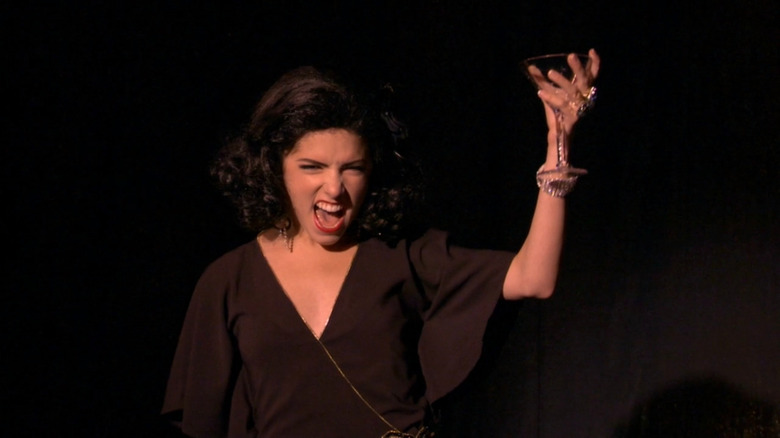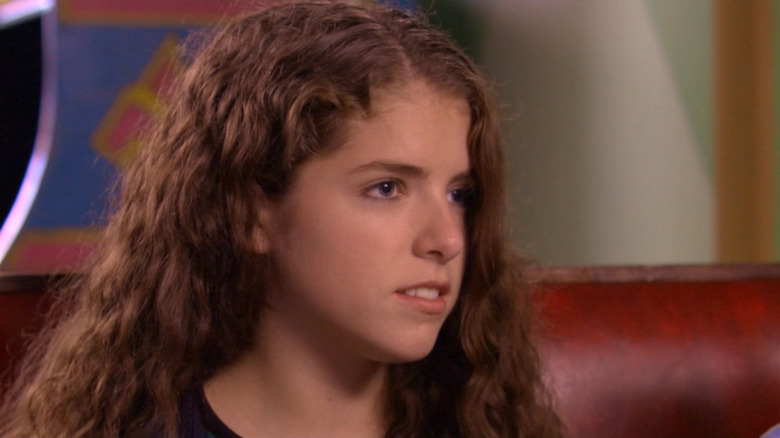
When people decide to get into theatre, the audience is typically a major reason why they do it. For as personally gratifying it is to deliver a well-crafted monologue, belt out a brash 11 o'clock number, or nail a complicated tap dance routine, the reason all that work is worthwhile is getting an audience to applaud, to laugh, to cry, to gasp, or whatever you are performing is hoping to elicit from the people in the house. This is particularly true in musical theatre, where shows are literally designed to have designated moments for the audience to shower the performers in applause.
Anna Kendrick was a bona fide theatre kid, appearing on Broadway at the early age of 12 in a stage adaptation of the 1956 movie musical "High Society" (which in turn was a musical adaptation of the 1939 play "The Philadelphia Story"). She played the precocious younger sister to the show's leading lady (Melissa Errico), and for her performance, she even received a Tony Award nomination, despite the lackluster reception to the show itself. A few years later, Kendrick would score her first film role in Todd Graff's 2003 comedy "Camp."
One would assume that "Camp" would be the perfect transition point for an actor like Kendrick, as the film is set at a Stagedoor Manor-esque musical theatre camp. In terms of performance, she absolutely steals the movie, especially with her unhinged performance of "The Ladies Who Lunch" from Stephen Sondheim's "Company." While the final result delivers, the actual making of the movie proved to be a rather big departure for Kendrick, and that has everything to do with the one thing the stage gives a performer that filmmaking doesn't: an audience.
The Uneasiness Of Not Knowing

Stage actors are conditioned to know that what they are doing is good through applause. On a film set, applause rarely occurs. Firstly, the only people watching what you're doing are your fellow coworkers. They're concerned with accomplishing their own jobs to fully acknowledge what the actor is doing. Secondly, if the crew were to applaud after every scene, that would be an absolute nightmare for the person recording sound, as every single take would be ruined. Thirdly, you're doing the same scene over and over again, removing any kind of novelty factor for those around you. Because these reactions she had become accustomed to had to be removed, Anna Kendrick struggled to understand if she was doing a good job. Speaking with Vanity Fair, she recalled her frustration as a teenager looking for approval on her first film:
"The hard part of coming from theatre was that we'd finish a take, and I would be like 'Was that good?' It was very weird to not have that immediate feedback and to just look at like one guy, the director [Todd Graff], and be like, 'So, was that good?' And he'd be like, "Yeah, yeah, yeah. We can move on,' and that's all you get. So, like, adjusting to that was tricky. I think I was pretty in my head about how it was going."
The one scene she felt good about was her performance of "The Ladies Who Lunch," which she recalled the director describing as "lightning in a bottle." Ultimately, understanding how you are performing on camera can really only come with experience and trusting your director knows what they are doing, and if it isn't working, there's always another take to try again. It depends on the actor if that's fulfilling enough.
Read this next: The 25 Best Kids' Movies Of All Time
The post Moving From Stage To Screen For Camp Was A Big Adjustment For A Teenage Anna Kendrick appeared first on /Film.
0 Commentaires